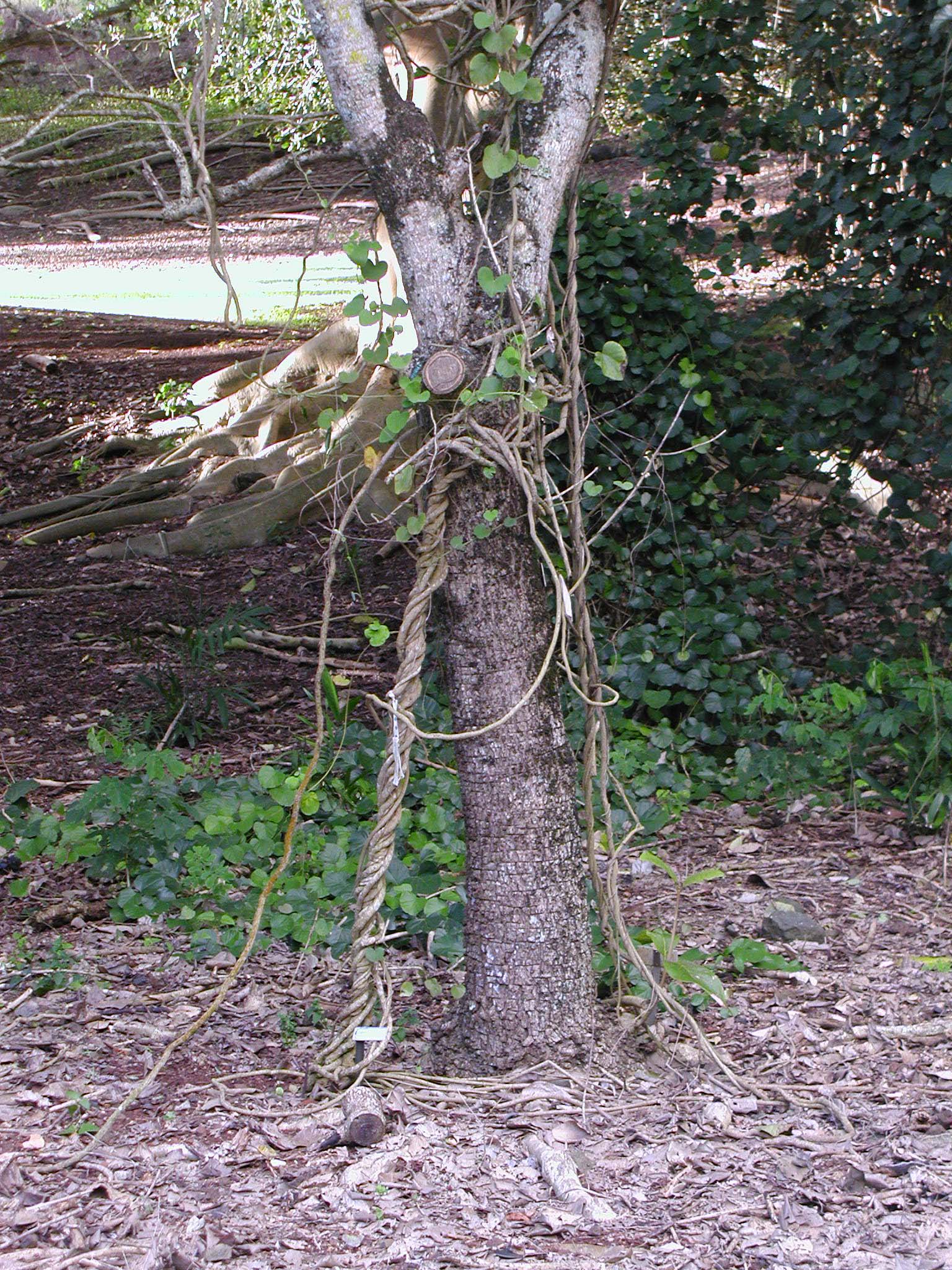Chondrodendron tomentosum
The Hairy cartilage tree ( Chondrodendron tomentosum ), also known as semolina or root Pereira, is a species of the genus in the family Chondrodendron the moon seed plants ( Menispermaceae ). Like most species of the family of the moon seed plants has also this kind to a high alkaloid content. The main active ingredient is D- tubocurarine, which is a component of curare, a toxic, used by parts of the indigenous people of South America arrow poison.
- 3.1 agents
- 3.2 Use
- 3.3 symptomatology
- 3.4 Pharmacology
- 3.5 First Aid
Description
Vegetative characteristics
When Hairy cartilage tree is a vine whose hairy Stems reach stature heights of up to 30 meters. The exchange constant arranged leaves are divided into petiole and leaf blade. The petiole has a length of 8 to 12 cm. The leathery leaf blade is 10 to 15 cm long and about the same width. The lower leaf surface is hairy whitish.
Generative features
The inconspicuous, unisexual flowers are arranged in a drooping, racemose inflorescence. The black- purple when ripe, shiny, fleshy fruits contain crescent-shaped seeds.
Occurrence
The Hairy cartilage tree is common in the western parts of Bolivia, as well as in Peru, Ecuador, Colombia, and Panama Central.
Use
Agents
The active substances act as a neurotoxin and is classified as very toxic (Ia). The main active ingredient of the plant here is the D- tubocurarine. It also contains Ćurin, Chondocurarin, Chondocurin, Cycleanin and Norcycleanin.
Use
In surgery pure tubocurarine found application as a muscle relaxant. Furthermore, the substance is a component of curare arrow poison.
Symptoms
Tubocurarine exerts its effect only if it enters the bloodstream, at an oral ingestion or contact with the skin, it is almost inactive. The LD50 for various mammals is for the alkaloid at 0.23 to 0.70 mg / kg body weight for intravenous application. When injected or injury with a suitably prepared Arrow occur dizziness, tachycardia, hypotension, bronchospasm, weakness, nausea, pain and fever. In addition, thirst, paralysis and coma. Death occurs from respiratory paralysis.
Pharmacology
The active substance D- tubocurarine acts as an antagonist at presynaptic acetylcholine receptors of the motor end plate, whereby the effect is due to a muscle relaxant. A further effect is the stimulation of histamine release. This causes the drop in blood pressure, tachycardia, circulatory collapse and bronchospasm.
First aid
In case of overdose, the administration of 2-3 mg of neostigmine occurs in combination with 0.5-1 mg atropine. Wherein the cholinergic effect of the toxin on the circuit is neutralized, and the bronchi. Severe intoxication intubation and mechanical ventilation is necessary.
Swell
- Michael Wink, Ben -Erik van Wyk, Coralie Wink: Handbook of poisonous and psychoactive plants. Scientific Publishing Company, Stuttgart, 2008. ISBN 3804724256
- Specifications for National Tropical Botanical Garden in the U.S..
- Moon seed plants










